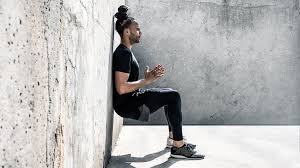
Isometric Exercises To Improve Athletic Performance
A significant part of an athletes program that is often neglected is the involvement of isometric strength training. To put this simply, isometric exercise involves activation of a specific muscle, or muscles, without changing the length of that muscle. Think, “strengthening without lengthening.” For example, holding the bottom position of a wall squat for a certain amount of time would be considered an isometric exercise. In this position, you are actively firing certain muscles without movement. Now that we have an understanding of what isometrics are, lets discuss the top three reasons why we would include them and three isometric exercises to improve athletic performance.
Why Isometrics?
Injury Recovery & Prevention
Sudden injury like a rolled ankle or a tweaked shoulder can be common for athletes who practice in sport daily. Isometrics are a safe way to put less strain on the injured area and create a pathway for the road to recovery. Inflammation may occur after an injury as part of the healing process. Appropriate isometric exercise will not cause additional inflammation, the way traditional concentric/eccentric movements can. Injuries may force athletes to take a step back in their strength and conditioning program, but utilizing certain isometric exercises allows them to continue training without further injury while also decreasing chance of future injury.
Increase Tendon Stiffness
Isometric exercises improve stiffness within the tendons that connect muscles to bones. When first hearing this we may think this is a bad thing, why would I want my tendons to be stiff? Let’s use the achilles tendon as an example. When an athlete jumps, the achilles tendon plays a crucial role in how effective this jump will be. Think of the tendon in this scenario as a spring that can be loaded. If we have a “loose” spring that we load, the amount of power and explosiveness in that jump will be less than compared to a spring that is “stiff.” Increased tendon stiffness allows for more force absorption, which is crucial for athletes who commonly have to withstand high loads.
Reduce Compensation
Isometrics are also important for reducing compensatory movement patterns. Let’s refer to the wall squat again. While holding the bottom of that position for a length of time, we can focus on which muscles should be firing. Common mistakes can include lack of glute and core engagement, and not properly gripping the floor with the feet. Learning and feeling which areas should be involved during the squat will improve voluntary muscle contraction during more dynamic and powerful squat movements.
3 Isometric Exercises for Athletic Performance
Elevated Isometric Calf Raise
Bulgarian Isometric Hold
Supine Hamstring Hold Variation
Isometrics are valuable to athletes for various reasons. They are important for recovery and injury prevention, increasing tendon stiffness, and reducing compensation throughout certain movements, amongst many other benefits. The use of appropriate isometric strengthening is crucial for athletic performance and should not be an after-thought when programming for athletes.
Pat Sturdahl worked in an outpatient physical therapy setting for over seven years before joining Olympia Fitness. He enjoys working with clients to help improve their mobility, stability and strength. Pat has experience working with local high school teams where he previously ran “Speed Schools.” This training focused on sport specific movements and plyometric drills.

